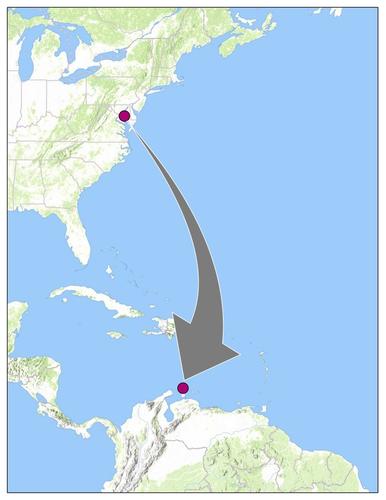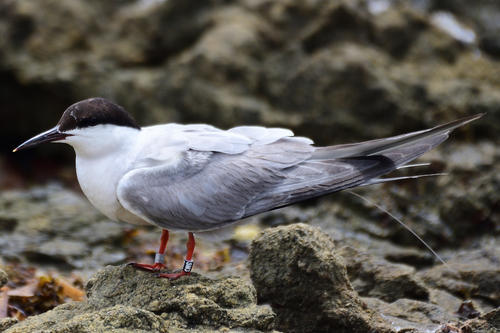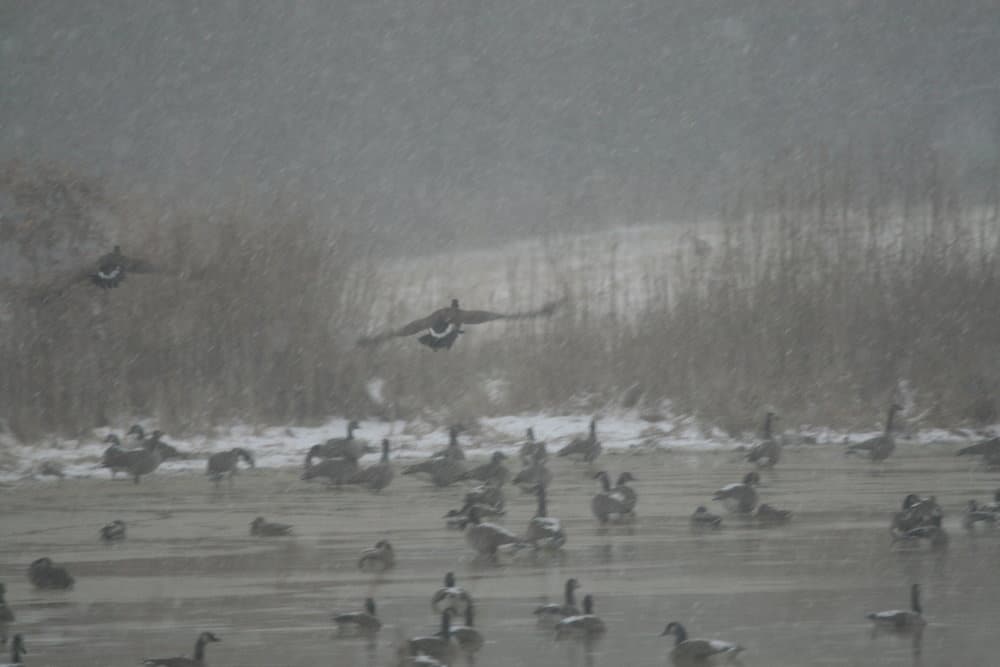A new tagging system aims to track young Chesapeake waterbirds that spend winter way down south. And thanks to an observant bird-watcher in Aruba, we can see that it’s working.
From terns to ospreys, chicks born in the summer on the Bay face the daunting challenge of migrating a thousand miles and more to Central and South America only a month after they have first learned to fly and catch fish.

It’s always a risky journey for these inexperienced young seabirds, and mortality is substantial, but clear observations are scarce. The digital age offers advanced radio telemetry (tagging) systems in minuscule packages that even a bird as small as a common tern can carry without hampering its activities, including fishing, breeding, rearing young, and migrating. The challenge is how to tag a chick that is still growing without hindering its capacity to continue its development.
Biologists in the U.S. Geological Survey’s Eastern Ecological Science Center (USGS EESC) at the Patuxent Research Refuge combined digital wizardry with engineering to develop two kinds of flexible harness that would allow a tern chick to carry the transmitter (along with two leg tags standardized to the system of the U.S Fish & Wildlife Service). Working with surrogate chicks of similar size, feathers, and weight (Japanese quail), they found that leg-loop harnesses constructed from elastic cord and backpack harnesses from Teflon-like ribbon are suitable for attaching to growing juveniles. Collaborating with biologists from the Maryland Department of Natural Resources and the USFWS, they banded 18 adult common terns and 24 chicks at the restoration site on Poplar Island in June.
One adult originally given leg bands on Poplar Island in 2017 and fitted this year with a flexible harness transmitter traveled over 1,850 miles to Aruba, where a local naturalist saw and photographed it. The EESC report suggests, “This tern will either remain until next spring or rest before continuing migration to wintering grounds as far south as Peru.”
The report from the community scientist in Aruba is especially helpful because the radio-transmitter tags used in this project rely on receivers to gather detections, and no such receivers are located in the area where the bird was seen.
“Information gained from tracking the movements of these and other common terns will improve understanding of how individuals breeding on Poplar Island use habitat at local and global scales. Ultimately, the data gathered through this project will help inform habitat management and conservation efforts for common terns, which are listed as endangered in Maryland.”
Now, when we see terns flying over the Bay next summer, we’ll know a little more about the epic migrations of these little birds, thanks to the tagging project.
-John Page Williams




